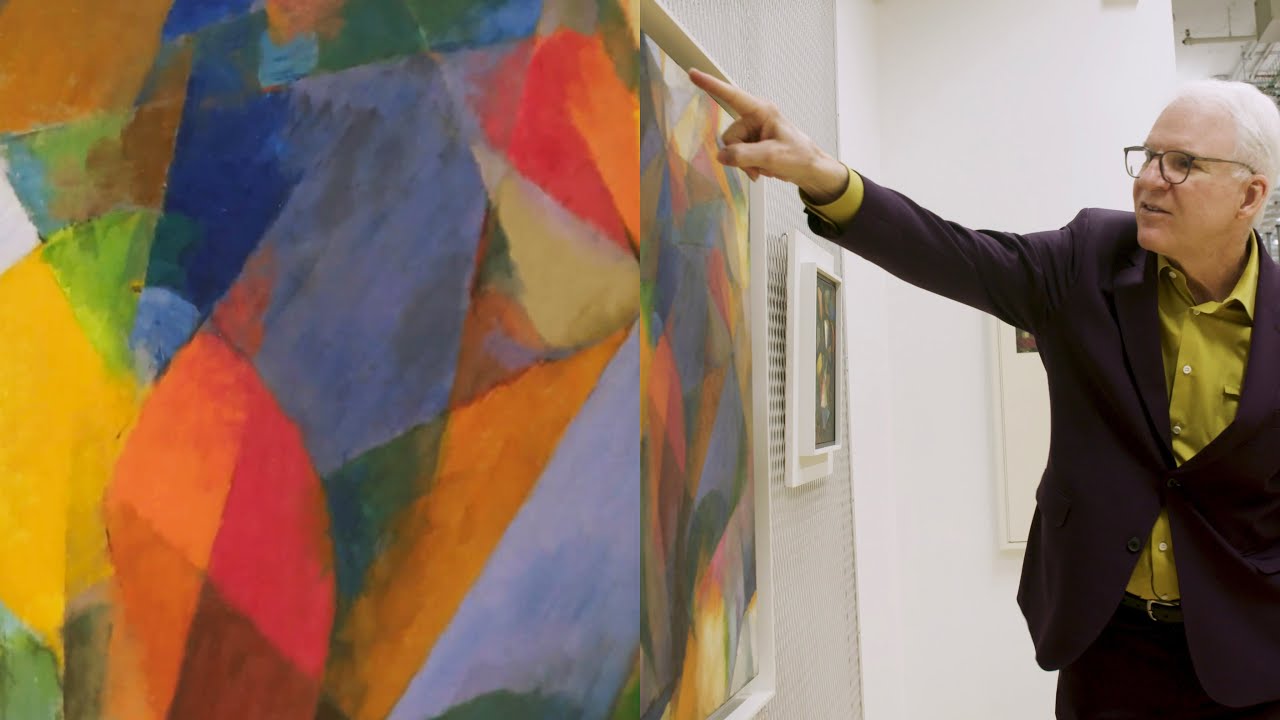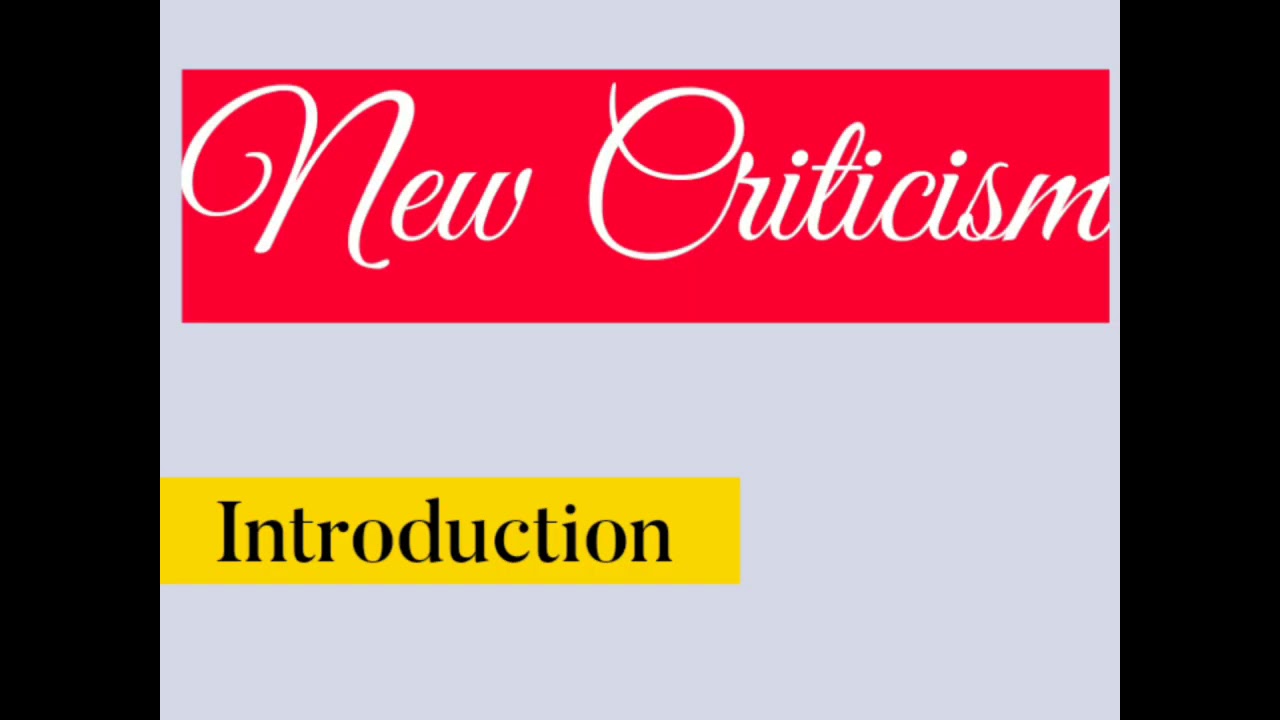The Museum of Modern Art
In this episode of “The Way I See It,” actor and comedian Steve Martin looks at paintings by two early pioneers of American abstraction and takes us on a journey of seeing—shape and color transform into mountains, sky, and water.
Find “The Way I See It” on BBC Sounds or wherever you get your podcasts.
https://www.bbc.co.uk/programmes/m0009bf6
Subscribe for our latest videos, and invitations to live events: http://mo.ma/subscribe
Explore our collection online: http://mo.ma/art
Plan your visit in-person: http://mo.ma/visit
Commit to art and ideas. Support MoMA by becoming a member today: https://moma.org/join
The comments and opinions expressed in this video are those of the speaker alone, and do not represent the views of The Museum of Modern Art, its personnel, or any artist.
#TheWayISeeIt #SteveMartin #StantonMacdonaldWright #MorganRussell #art #museumofmodernart #moma #museum #modernart
Source




Yes
So how do you loo at it?
Thanks Steve.
I see… shapes
I have always been appreciative of Steve Martin's dexterity of funny witticisms but alas this time I fear way too close to the catnip but these paintings are indeed classy abstracts
I love that Steve loves art
If you Google Richard Diebenkorn, you will see the wonderful overlap between landscapes and the abstract.
Humans interpret EVERYTHING they experience, which is another reason I'm drawn to abstract art.
Abstract art is more of a psychological landscape where the elements and principles of art become a unique language.
That was awesome. AKA "Steve Martin's LSD trip at MOMA."
Steve out her lookin like an older and classier Spike
I love when paintings hang for a long time only to be discovered they were upside down… =P
Thank you so much for this video. It was amazing to see it whole. Greetings from the artist from the Czech republic ❤️
I was hoping for similar interpretations from Steve like in the great LA Story. Still enjoyed this 🙂 … Call mom … argh ….
I love how Steve asserts his experience and is not interested in the academic elements of the painting. His observation is the meaning and it’s given room to change.
these don't look as abstract as much…in my opinion. it's rather symmetrical actually
Two words "Interior Decorating".
Most art has to be viewed from a certain angle , distance and lighting to be appreciated.
This makes it unsuitable for decorating the interiors of most buildings.
Imagine trying to incorporate a Renaissance masterpiece into the decor of a high end apartment since there would be only one spot in the room you could view it properly, it dictates what the lighting in the room will be and it's a safe bet it wont compliment the color scheme your interior decorator has picked out.
Modern Art is created to be viewed from any angle or distance and has a simple high contrast composition that works in any lighting
Bright hues that highlight the rooms color scheme or completely neutral to avoid clashing.
Interior decorators push "Modern Art" because it makes their job easier.
While there's a certain amount of creativity and intelligence involved, could we please stop pretending these pieces have any deep or spiritual meaning.
is this a scene from cheaper by the dozen
Steve Martin, introduce himself? Is the video aimed at the under-5s.
It's Provocative and inspiring.
I see King Tut
Oh So Affirming!
I understand “abstract art” to mean a work that simplifies to an extreme. that can go all the way to a blank minimalist point if the artist wishes to go there. But it started out as a “thing” and then became abstracted to a point. So it’s perfectly sensible to imagine what it might be, but not real important, because the artist abandoned the representational object and embraced to a degree the non-objective world of the unknown
I see a person in the left painting.
I like this video.
It's upside-down?…everybody knows that 🙂
If it’s a Rorschach, I see a sitting woman. (Possibly nude, the big picture) the small is a critter like an anteater with its trunk.
Steve Martin is an intelligent, cultured, and fundamentally serious person (in addition to being a "wild and crazy guy" on-screen), and the several friends of mine who have met him (I haven't) say he's kind and considerate… a perfect gentleman. His love of art is genuine: not only does he collect, but he works his love of art into his films, most notably "Shop girl." I saw a show of Canadian painters he curated at the Boston Museum of Fine Arts several years ago. That being said, I simply must object to his statements that you can understand and appreciate art fundamentally without "studying the ISMs," and by implication all the context and art history surrounding a work. You may get some enjoyment, and even personal insight, but great art is so much more than that. Consider the case at hand: "Creavit Deus Hominem (Synchromy Number 3: Color counterpoint)." The artist Morgan Russell used that title ("God created man") for a reason and if that kind of context isn't part of your understanding and perception, your limited understanding may satisfy you, but ultimately will be shallower than it could be. True, great art admits a wide range of interpretations, but not all interpretations are equally valid nor equally insightful nor equally illuminating. For instance, knowing this title (and a bit about the life and "isms" of Russell), you may be more likely to see in the fundamentally abstract painting hints of a human figures. I'm not saying this is the "correct" interpretation of this work, but what I AM saying is that understanding the background, history, "isms," and such may lead you to see new things, craft new AND BETTER interpretations. My own understand and appreciation of works is almost in direct proportion to the amount I know and understand about the artist, his/her goals, andy es the "ISMs." My excellent college courses in art history opened my mind and eye in a way that even prolonged and close visual inspection of works (which of course is essential). Such context will also help link any particular work to other works—connections that might not have been evident without such knowledge. The proper response to the extreme version of the "I just let the art speak to me… damn the 'isms'" (an extreme I don't ascribe to Mr. Martin) comes from my favorite popular writer on art history, Robert Hughes. He said: "Whenever someone tells me they don't know much about art but they know what they like, I reply: 'If you don't know much about art who CARES what you like?'"
I love what he says, I also like watching a paint many times, because it really changes, or maybe WE change with it 🙂 while we are watching…
I saw a man with an arrow through his head.
Isn't Steve Martin a painter when his not acting?
Absolutely amazing picture and reading too.
how do they know the paintings are right side up?
The painting by Stanton Macdonald-Wright appears to be a painting of people. There are two primary figures within the work. At the center you can make out an abstract man wearing a colored tie. Overlapping the man is a female figure, her head at the top right, she appears to have on vibrant red lipstick. The orange and blue on the work appear to be her dress that overlap the man. Finally at the bottom center, slightly right it appears that there is an infant in the females arms to which she is gazing down at.